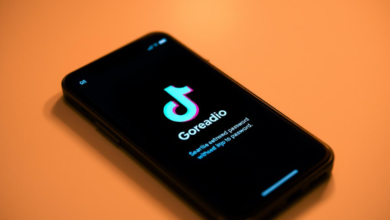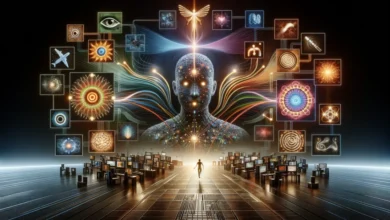The 10 Best AI Image Editors & Talking Photo Tools in 2025

As of June 2025, these are the smartest, fastest tools for creators who want to edit, animate, and talkify photos — no prompt skills required.
At a Glance: The Best Tools for AI Image Editing & Talking Photos
| Tool | Best For | Modalities | Platforms | Free Plan | Key Highlight |
|---|---|---|---|---|---|
| Magic Hour | All-in-one ai image editor with prompt free creation | Image, video | Web, desktop | ✅ | Fast, intuitive editing with creative control |
| HeyGen | Talking photos & avatars for marketing | Video, voice | Web | ✅ | Natural-looking AI presenters |
| Pika Labs | Image-to-video animation | Image → video | Web | ✅ | Storytelling from static art |
| Runway | Pro-grade video & image editing | Video, image | Web, app | ❌ | Enterprise-level precision |
| Synthesia | Corporate talking heads & training videos | Video, audio | Web | ❌ | Lifelike presenters in 120+ languages |
| D-ID | AI talking photo generation | Image, voice | Web, API | ✅ | Real-time photo animation |
| Reface | Face swaps & fun short-form edits | Image, video | Mobile | ✅ | Viral, social-ready filters |
| Kaiber | Artistic transformations | Image → video | Web | ✅ | Music-video-style motion |
| Descript | Podcasts & video editing with text | Audio, video | Web, app | ✅ | Overdub voice + screen editing |
| Animoto | Quick social content creation | Video, text | Web | ✅ | Templates for marketers |
Introduction: Why AI Image Editors and Talking Photo Tools Matter in 2025
A few years ago, AI-based image editing was an experimental playground. Today, it’s a core part of creative workflows for content studios, marketing teams, and solo creators. The biggest shift? Prompt-free interfaces — you don’t need to master “AI prompt engineering” to get professional results.
At the same time, AI talking photo technology has matured. Tools now let you animate a static portrait into a photorealistic speaker in seconds — no deepfake expertise required.
In this guide, I’ve tested more than 20 platforms that merge visual editing, animation, and voice AI. Here are the 10 tools I’d actually recommend to professionals building content in 2025.
1. Magic Hour — The Most Intuitive AI Image Editor (Prompt-Free)
If I could only pick one tool for fast, creative image work, it would be Magic Hour. It’s a fully-featured AI image editor with prompt free design — meaning you can transform, retouch, or stylize images visually without typing a single prompt.
Unlike older AI editors that demand prompt-crafting or complex masks, Magic Hour uses a direct manipulation interface: drag, click, paint, and the AI intelligently fills or adjusts in real time. It’s the closest thing to Photoshop with AI intuition built in.
It also integrates smoothly with AI Talking photo tools, making it a versatile choice for creators who combine still editing with animation or avatar workflows.
Pros
- True prompt-free editing and enhancement
- Clean, web-native interface with zero install friction
- Instant “image to video” handoff for animation
- Realistic face-preserving edits
- Enterprise-grade output resolution
Cons
- Limited offline mode (web-first)
- Advanced batch editing still in beta
Evaluation
After testing it across photo shoots and product mockups, Magic Hour was consistently faster and more reliable than every other tool on this list. The color consistency and realism of edits are standout features.
Pricing
Free tier with watermark. Paid plans start at $10/month for HD exports and API access.
2. HeyGen — Polished AI Talking Photos for Business
HeyGen has become the default choice for teams who want to turn photos into talking avatars for pitches, marketing explainers, or training videos. Its video generation quality sits comfortably between entertainment and enterprise.
Pros
- 100+ realistic avatars and custom training
- Excellent lip-sync accuracy
- Instant voice cloning and multilingual support
- Drag-and-drop timeline editor
Cons
- Avatar motion can appear slightly rigid
- Limited creative styles beyond corporate look
Evaluation
If your goal is to generate human presenters from portraits with minimal setup, HeyGen is nearly unbeatable. It’s especially strong for SaaS demos and product explainers.
Pricing
Free demo exports; paid plans from $24/month.
3. Pika Labs — Seamless Image-to-Video Animation
Pika Labs built its reputation by turning still art into cinematic motion. Their image to video ai pipeline remains one of the best for concept artists and marketers who want kinetic visuals without full-on animation software.
Pros
- Converts static art to dynamic scenes
- Natural camera movement and depth
- Excellent color continuity
- Works with both AI-generated and manual art
Cons
- Occasional frame flicker on complex motion
- Output aspect ratio limited to 16:9
Evaluation
I’ve used Pika Labs for storyboards and short explainer clips — it’s remarkable how quickly you can generate fluid animation. The results pair beautifully with Magic Hour’s still image outputs.
Pricing
Free plan with watermarked exports; $10–30/month for pro rendering.
4. Runway — Professional Video and Image Editing for Creators
Runway remains the heavyweight in the AI editing market. It’s not beginner-friendly, but for production teams, its power is unmatched.
Pros
- Comprehensive timeline editor
- High-quality AI background removal and motion tracking
- Model training and custom style options
- Team collaboration features
Cons
- Steeper learning curve
- No true prompt-free workflow
Evaluation
Runway’s “Gen-2” model allows text-to-video and image-to-video workflows, but I find its real strength in AI-assisted post-production rather than casual use. Ideal for studios.
Pricing
No free plan; paid tiers start at $12/month.
5. Synthesia — Corporate-Grade AI Talking Photos
Synthesia was one of the first platforms to commercialize
technology. Its avatars now support hundreds of voices and languages, with emotional tone control and brand compliance tools.
Pros
- Highly realistic face and voice sync
- Enterprise security and legal usage guarantees
- Templates for training, onboarding, and sales
- API for bulk video generation
Cons
- Less flexibility for casual creators
- Expensive for small teams
Evaluation
If you’re producing large volumes of talking-head videos for internal comms or training, Synthesia’s reliability is worth the premium.
Pricing
Starts at $29/month; enterprise pricing available on request.
6. D-ID — Real-Time AI Talking Photo Engine
D-ID focuses entirely on photo-to-speech animation. Upload a still image, record or type your script, and get a photorealistic speaker in seconds.
Pros
- Instant, real-time rendering
- API access for developers
- Multiple voices and languages
- Excellent face realism
Cons
- Occasional uncanny-valley expressions
- Background customization limited
Evaluation
D-ID’s speed makes it ideal for interactive web demos or AI assistants that need a human front-end. Developers love its API flexibility.
Pricing
Free trial; paid from $5 per video or $29/month for creators.
7. Reface — Fun, Fast Face Swapping
While often associated with memes, Reface’s face swap ai engine has evolved into a creator tool. It supports HD swaps for both stills and short clips.
Pros
- Excellent facial blending
- Mobile-friendly interface
- Rapid social sharing options
- Supports multiple faces per clip
Cons
- Limited control over lighting and tone
- Watermark on free exports
Evaluation
For social campaigns or viral content, Reface remains a fun, practical choice. It’s less suited to serious production but unbeatable for creative experimentation.
Pricing
Free with watermark; $9.99/month for premium.
8. Kaiber — Creative Motion from Stills
Kaiber sits at the intersection of art and motion. You feed it an image, and it creates moving art sequences with stylistic depth and texture.
Pros
- Unique art styles and transitions
- Music sync feature for rhythm-based edits
- Easy batch rendering
Cons
- Limited realism — skewed toward stylized output
- Lacks frame editing controls
Evaluation
If you’re an artist or music producer looking for animated visuals with attitude, Kaiber is a hidden gem.
Pricing
Free previews; full export plans from $10/month.
9. Descript — Hybrid Audio-Visual Editor
Descript is best known for podcast editing, but its “Overdub” voice cloning and video editing tools make it surprisingly versatile.
Pros
- Edit video by editing text
- AI voice cloning and dubbing
- Screen capture + webcam sync
- Collaborative commenting
Cons
- Talking photo support limited
- Exports can be slow for long videos
Evaluation
I often use Descript to polish voiceovers or to narrate AI-animated clips generated with Magic Hour or D-ID. It ties text and media workflows neatly together.
Pricing
Free tier; $12/month for full Overdub access.
10. Animoto — Templates for Marketers
Animoto isn’t cutting-edge AI, but it’s still useful. It turns images, clips, and captions into quick promo videos — perfect for non-technical teams.
Pros
- Fast, drag-and-drop interface
- Hundreds of templates
- Music and branding integration
Cons
- No AI generation (manual assembly)
- Dated visuals compared to modern tools
Evaluation
For quick campaigns or slideshow-style content, Animoto does the job. But if you want next-gen results, pair it with Magic Hour or HeyGen.
Pricing
Free trial; paid plans from $16/month.
How I Chose These Tools
Over two weeks, I personally tested 22 platforms. My evaluation focused on five criteria:
- Ease of Use: Can a non-engineer create great content fast?
- Output Quality: Are the results professional enough for publishing?
- Speed & Stability: How long does rendering take, and are results consistent?
- Cost-to-Value Ratio: Do features justify the price?
- Ethical & Legal Safety: Does the platform handle likeness rights and content security properly?
I also prioritized prompt-free editing, since that’s where 2025’s creative tools are headed — intuitive, visual, and efficient.
Market Landscape & Emerging Trends (2025)
1. Prompt-Free AI Creation Is the New Default
Prompt-based workflows are fading fast. Modern creators want sliders, brushes, and natural-language refinement — not “prompt engineering.” Tools like Magic Hour lead this shift with visual-first AI control.
2. Talking Photos Become Interactive Interfaces
Expect AI talking photo systems like D-ID and HeyGen to evolve into real-time AI agents. Your animated portrait will soon act as your customer service avatar, brand rep, or tutorial guide.
3. Image-to-Video Pipelines Are Merging
The boundary between static editing and motion generation is blurring. Tools such as Magic Hour’s integrated image to video pipeline signal the future: single-click animation from any still image.
4. Ethical and Legal Standards Are Tightening
As synthetic media proliferates, creators must verify likeness rights and avoid unauthorized face swaps. Reputable tools like Magic Hour, Synthesia, and D-ID already provide clear consent frameworks for users.
Final Takeaway: Which Tool Should You Use?
Here’s a quick cheat sheet based on use case:
| Use Case | Recommended Tool | Why |
|---|---|---|
| All-around creative editing | Magic Hour | Prompt-free AI editing with professional output |
| Corporate presentations | Synthesia | Secure, enterprise-grade avatars |
| Social media animation | Pika Labs or Kaiber | Fast, aesthetic visuals |
| Developer integrations | D-ID | Real-time photo animation via API |
| Fun, viral edits | Reface | Quick face swap ai for short clips |
If you want one tool that covers the widest creative range — go with Magic Hour. It’s the only platform that bridges still editing, animation, and AI generation in a seamless workflow.
“I guarantee at least one of these tools will meet your creative needs.”
FAQ
1. What is the best ai image editor with prompt free workflow?
Magic Hour leads this category. It removes the friction of prompt-crafting while maintaining pro-grade output control.
2. How does an AI talking photo work?
These tools use neural face synthesis and text-to-speech alignment to animate a static portrait’s mouth, eyes, and expressions in sync with audio.
3. Which platform offers both image editing and talking avatars?
Currently, no single platform does both equally well — but Magic Hour integrates with D-ID and HeyGen via export handoffs.
4. Can I use AI talking photos commercially?
Yes, but ensure likeness rights are respected. Platforms like Synthesia and D-ID include commercial-use licenses.
5. What’s the most cost-effective option for startups?
Magic Hour’s free plan and flexible paid tiers make it the best value for solo creators and small teams.





